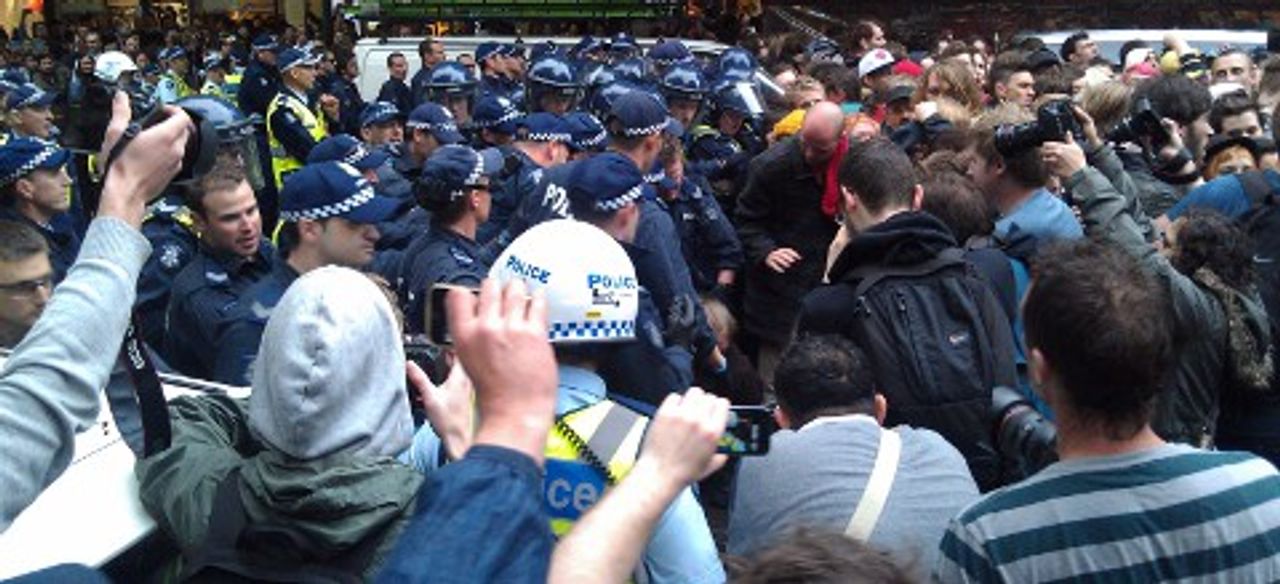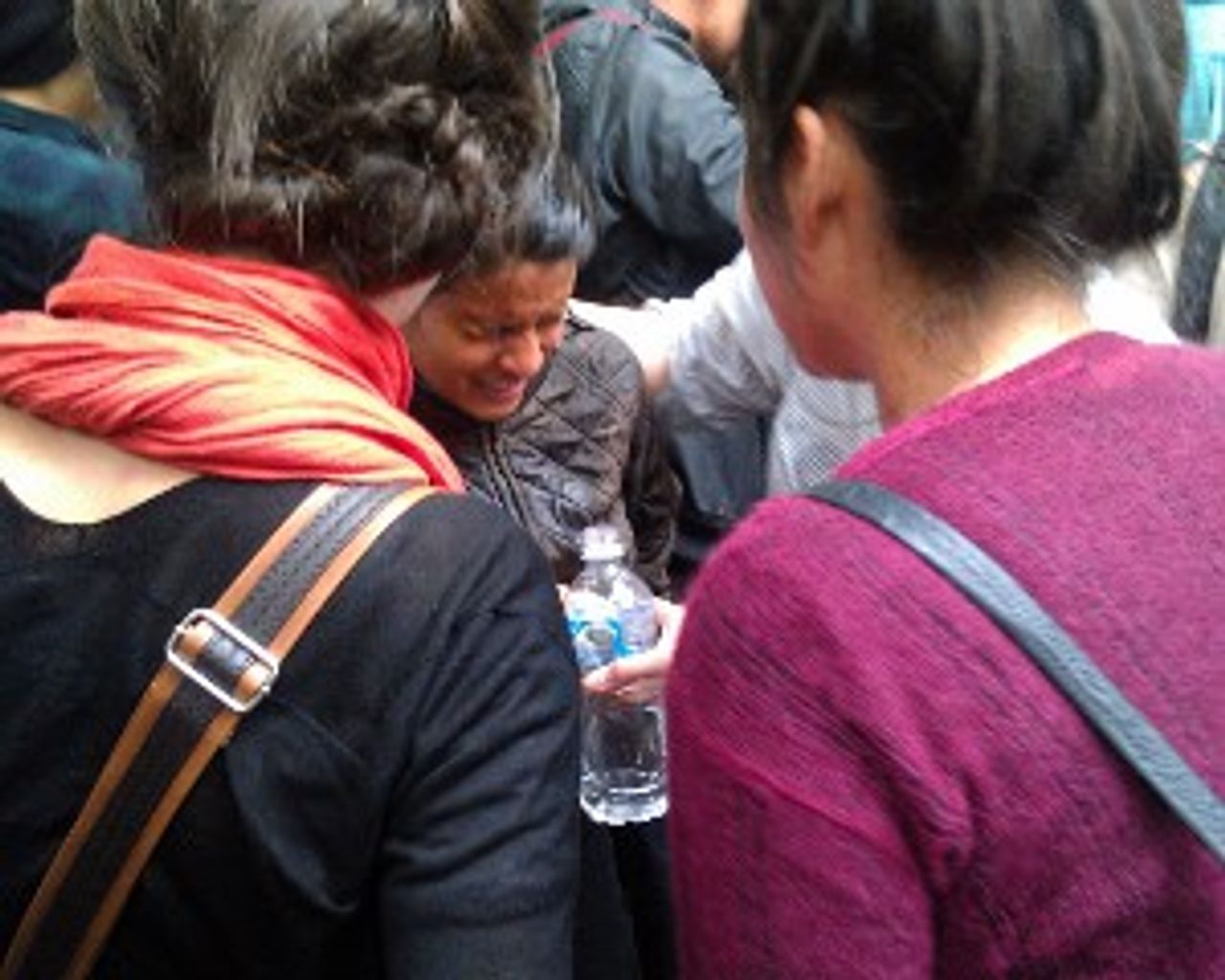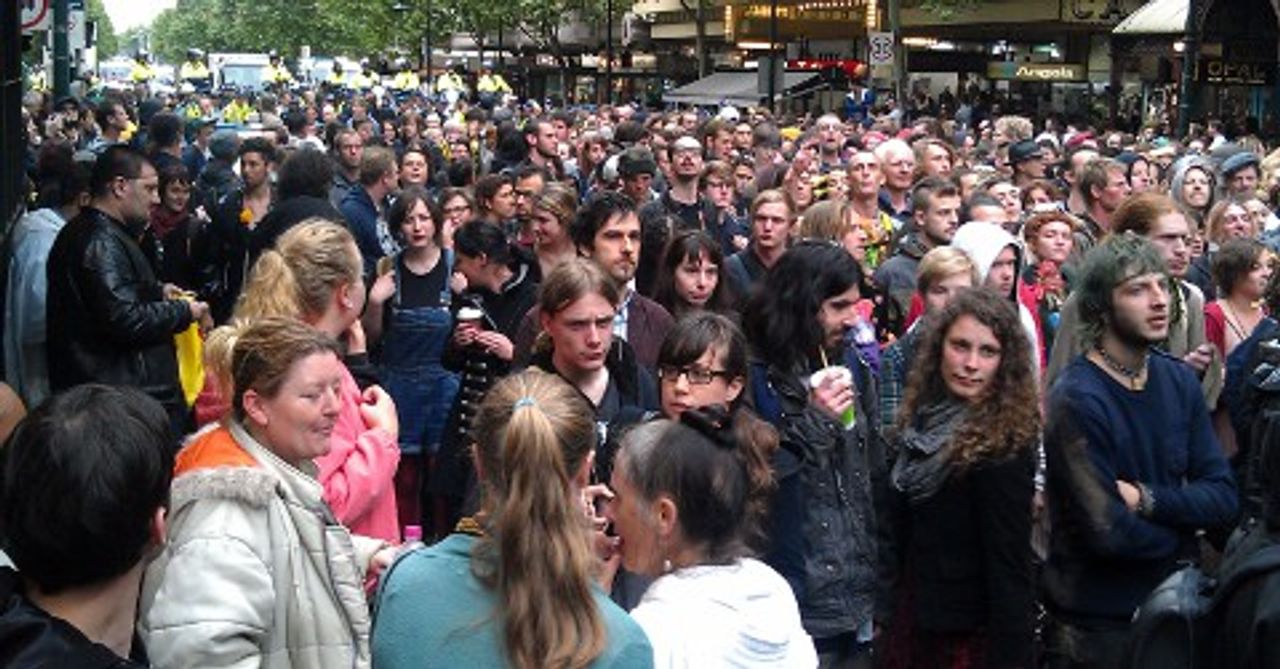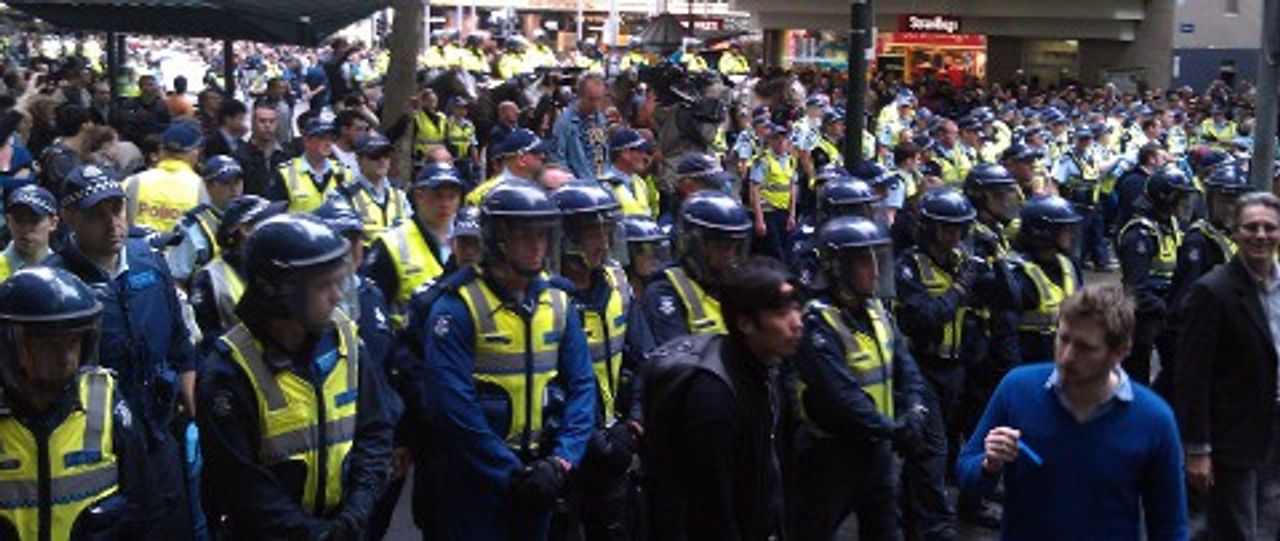A violent operation, involving hundreds of riot and mounted police, the Critical Incident Response Unit, the dog squad and plainclothes officers, was launched yesterday against the Occupy Melbourne protest camp. At least 95 people were arrested, many after being brutally assaulted by multiple police officers. Demonstrators were kicked, punched and blinded with capsicum spray. One was hospitalised after two police pinned him to the ground while another kicked him in the groin.
 Police line attacking protesters
Police line attacking protesters
Last Saturday, demonstrators occupied the City Square opposite Melbourne Town Hall, as part of the global actions against social inequality triggered by the Occupy Wall Street movement in the US.
Police marched in at 7 a.m. yesterday and announced that the occupiers had to leave within two hours or be forcibly removed. When protesters refused to go, high metal-wire fences were erected around their encampment. Squads of police cleared the street around the perimeters to isolate the approximately 100 people “kettled” within the fence.
 Woman suffering effects
Woman suffering effectsof police capsicum spray
Shortly after 9 a.m., the police moved against the protesters and onlookers on the western edge of City Square, roughly dragging dozens of people away, some of whom were arrested. Many were wrestled to the ground in headlocks, sprayed in the face with capsicum gas and hauled across the ground. Some police had removed their name badges to prevent being identified.
Police wrecked the tents and other parts of the camp. Possessions were dumped into trucks and reportedly taken to a rubbish tip.
As news of the police attack spread through social networking sites and other media, several hundred predominantly young people joined the protest. After City Square was cleared, demonstrators gathered on Swanston Street, one of central Melbourne’s main thoroughfares, and blocked traffic. They chanted “We are the 99 percent” and “This is a peaceful protest, that is police brutality.”
 Occupy Melbourne protesters were forced along Swanston St after police
Occupy Melbourne protesters were forced along Swanston St after policedestroyed the camp
The police operation continued throughout the day, into the late afternoon. Lines of riot police and horse-mounted officers gradually forced the demonstrators up Swanston Street. Each push forward involved further police assaults and arrests. (See interviews with protesters)
City workers expressed their sympathy for the protesters and opposition to the police operation. A large number of the people stuck in traffic honked their horns in support as the demonstrators passed by.
The demonstration concluded outside the trade unions’ Melbourne headquarters, Trades Hall, where protesters decided to hold another rally today. Hundreds of police have been deployed to prevent attempts to re-occupy any part of the city centre.
 Police riot squad deployed against protesters
Police riot squad deployed against protesters
The police operation was ordered by the Victorian state Liberal government of Premier Ted Baillieu and the Melbourne City Council led by Mayor Robert Doyle, a former state Liberal Party leader. Doyle provocatively observed the removal of the demonstrators from a balcony overlooking City Square.
Standing behind Baillieu and Doyle is the federal Labor government of Prime Minister Julia Gillard. Amid a worsening global economic crisis, the Labor government is coordinating a sweeping assault on working-class living standards and social programs to secure the competitive position and profitability of key sections of Australian big business.
Gillard has described her government’s agenda as economic “transition”—meaning the drastic lowering of conditions to new international benchmarks. Mass layoffs, wage cuts and productivity speed-ups are being imposed, with the active collaboration of the trade unions, across most sectors of the economy.
Major employers, many based in the Melbourne area, have carried out or are preparing major restructuring. These include Pacific Brands, PPG, Swift Meats, BlueScope Steel, Toyota, Ford, Patricks Stevedores, the Latrobe Valley power plants, Qantas airlines and the telecommunications giant Telstra.
The political establishment’s hostility to the occupation in Melbourne is driven by fear that it could develop into a focal point for broader working-class resistance—potentially involving the occupation of not just city streets but of workplaces targeted for major job losses or outright closure. Like the protests internationally, Occupy Melbourne has resonated widely because the demonstrations are directed against social inequality and corporate power.
The violence meted out against the Melbourne protest underscores the tense nature of class relations in Australia, and indicates the kind of repressive measures that will be unleashed against any wider movement of the working class.
The greatest danger that faces workers and youth beginning to enter into political struggle, however, is that their opposition to the state of society will be channelled into futile appeals to the very Labor government and other forces defending the interests of the ruling class. At Trades Hall last night, members of various pseudo-left organisations insisted that the key issue for the protest movement was to secure the support of the Greens—a pro-capitalist party in a de-facto coalition with the Gillard government—and trade union officials.
The real task confronting workers, students and young people seeking to end social inequality and the domination of the financial and corporate elite over economic and political life is the building of a new mass movement of the working class on the basis of a revolutionary socialist and internationalist perspective. The rule of the “one percent” can be ended only by establishing a workers’ government committed to placing the banks and all major industries under public ownership and democratic control, as part of a worldwide struggle for socialism.
